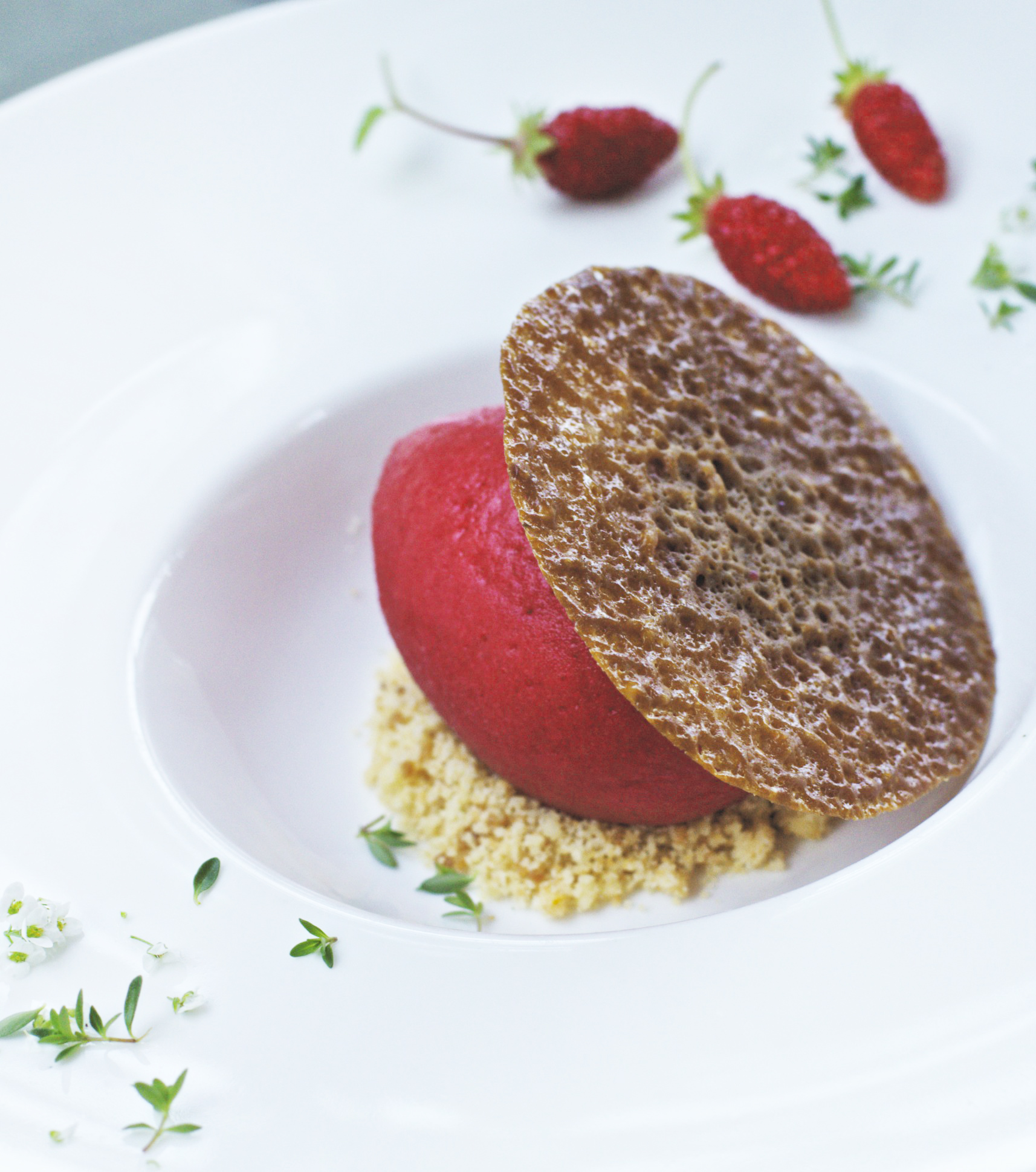You don’t need to have read Marcel Proust to know he is famous for immortalizing a pastry. In thousands upon thousands of words over the course of his epic Swanns Way the comely madeleine comes to represent all we hold dear about memory - how it triggers sensation, acting as a conduit to our lives on the most rudimentary level.
There’s little doubt that food triggers memory, sometimes in uncannily intimate ways. But while many of the food moments we remember best are a tribute to time and place and other people - the pleasure of eating chocolate in childhood, the intensity of tasting your first oyster with your first love - every now and then we come across a taste so singular we instantly know we’re never going to forget it.
Fraises des Bois, drooping oddly on their seemingly too slender stalks, are an unlikely looking candidate for one of these unforgettable mouthfuls. Shriveled up like full sized strawberries that have had all the moisture sucked out of them, when ripe they are anything but dry, evocative of earth and sun and summertime. Put one on your tongue and it emits a delicate perfume; bite down and a tiny puff of strawberry air fills your mouth and nose, waking up that little stretch of real estate in your brain that longs to be seduced with simple pleasures. Often all you get is one bite. Be warned, the taste does not linger. But what you register in that magical, brief moment is a flavor achingly alive, sweet yet floral, followed by a curious faint earthy afterglow: the phantom scent of a forest or wood, for which they are aptly named.
In a world where strawberry “essence,” derived chemically, turns up in everything from toothpaste to chewing gum, it can be a revelation to experience real strawberry flavor - that concentrated ripeness that justifies a strawberry’s glorious hue.
Technically, strawberries are not really even a fruit, or a true berry, they are botanically what's called an “aggregate accessory.”
The juicy part we eat doesn’t come from the ovaries of the flower, but the enlarged stamen. But while we don't eat what issues from their seed, seeds in abundance they do have - a single gram can contain over 2,500. Growing them from seed is notoriously difficult however, even for a seasoned gardener. Better to buy good quality starts and watch them spread their string-like runners across the surface of the ground; their tiny filigreed roots will cling tenaciously to all but the worst soils.
It is thought that the first wild woodland strawberries traveled over the silk road from Persia two thousand years ago, picking up a French pedigree in the 14th Century, when Charles V grew tired of waiting for them to be collected from his forests and had thousands of Fraise de Bois runners re-planted in the Royal Gardens. More for the king, less for the mule deer I guess - but to this day, wherever you plant them and despite (or because of) their alluring kiss-me-crimson color, they are a bitch to harvest, hiding under masses of three lobed serrated edged leaves, close to the soil where they like seem to thrive best.
Rachel uses a single Fraises des Bois on a rose petal float for one of our newest and most requested cocktails, The Never Ending Now, made with strawberry infused vodka, rose water, a hint of orange bitters, and a splash of Navarro Gewürztraminer. It’s an appropriate finish for this cocktail, whose name was inspired by the transitory but ineffaceable beauty of living moment to moment on our ridge, where Fraises des Bois (and other things) are encouraged to grow wild. Navarro Vineyards, our neighbors for the past three decades right down the hill, makes the heavenly grape juice.
Chef took a similar circumspect approach with the small supply we grow here at the Barn, keying just a few of them off the bolder flavors of fat, juicy, San Andreas strawberries from Preston of Dry Creek - picked optimally and delivering incredible flavor this summer - which Octavio has front and center in a simple but elegant summer sorbet dessert. To plate it Ryan edges shallow but wide rimmed white bowls with a sprightly trio of Fraises des Bois, micro thyme leaves and pale white flowers. Against the bracing taste of the sorbet, the delicacy of these tiny wonders makes you want to sing an ode to summer.
Rarely sold commercially, even when you grow them Fraises des Bois will barely give up more than a bowlful every few days. We naturally use them sparingly in the restaurant, which is fine - the better to appreciate each precious mouthful.
barndiva reading of the week
Creativity Creep: The changing landscape of how we define "creativity"







